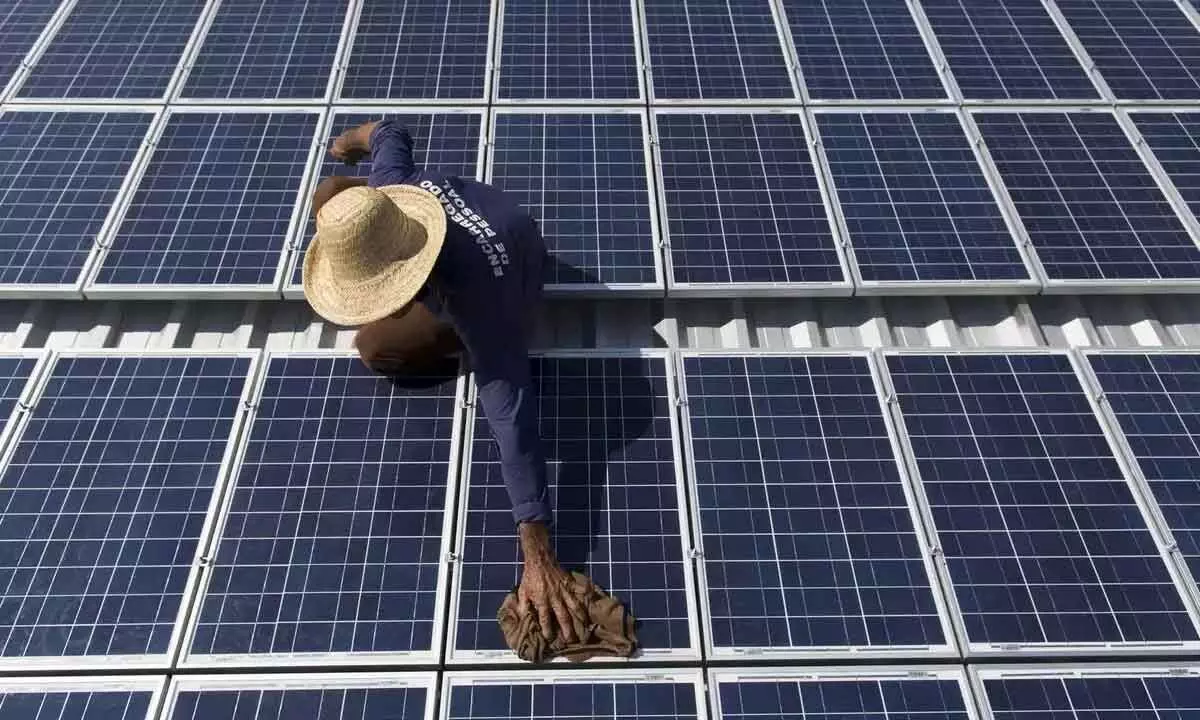Rising patronisation of‘open access solar’ is a welcome development
image for illustrative purpose

‘Open access solar’ is fast emerging as one of the bright spots in India's solar market, attracting commercial enterprises and industrial units to shift towards solar and other clean energy sources. And that’s not without reasons. The potential cost savings for businesses are hard to ignore, especially as solar costs continue to decrease while retail electricity prices rise. Solar power through open access implies an arrangement where a power producer establishes a solar power plant to supply green energy to consumers. Quite significantly, there is a strong pipeline for ‘open access solar’ in the country. The Electricity Act defines open access as the non-discriminatory use of transmission and distribution networks by licensees, consumers or generating companies in accordance with the regulations framed by the Regulatory Commissions. Let us now look at some of the current statistics. In calendar (CY) 2023, India added 3.2 gigawatts (GW) of solar open access capacity, an increase of 5.7 per cent compared to the 3 GW installed in 2022, a record for annual installations, according to the newly released report: 2023 Q4 & Annual Mercom India Solar Open Access Market Report.
This has to be seen in light of the fact that India had added 831.2 MW of open access solar in Q4 2023, a 22.8 per cent quarter-over-quarter (QoQ) drop, but up 6.2 per cent year-over-year (YoY) compared to 782.5 MW in Q4 2022. Doing a state-wide break-up, Karnataka remained the top state for cumulative installations, accounting for 33.1 per cent of the country's installations, followed by Maharashtra (13.5 per cent) and Tamil Nadu (11.4 per cent). The top five states contributed 72.2 per cent to the country's cumulative open access solar installations as of December 2023. India had 13.9 GW of projects under development and in the pre-construction phase at the end of Q4 2023. Sector analysts like Mercom India, feel that other than the larger conglomerates and international brands with presence in India, the domestic industries are also seriously considering green energy open access.
Responsible steel, green cement and sustainability initiatives across sectors have been adding to the demand for green power on a larger scale. Now, what is causing this sudden spur or what has been the trigger behind commercial establishments looking more towards green energy sources, and that too open access solar? What can be said at this point is that the extension of the approved list of models and manufacturers (ALMM) order until this month and falling module prices spurred commercial and industrial (C&I) consumers to commission pending projects and sign new PPAs. Declining system costs, favourable policies, and the Green Energy Open Access Rules in several states also fueled solar installations through the open access market in 2023. As per the Electricity (Promoting Renewable Energy Through Green Energy Open Access) Rules, 2022, consumers will be eligible for green energy open access if they have a contracted demand or sanctioned load of 100 kW or more The longer the trend continues, the better, for the sector and for the country.

